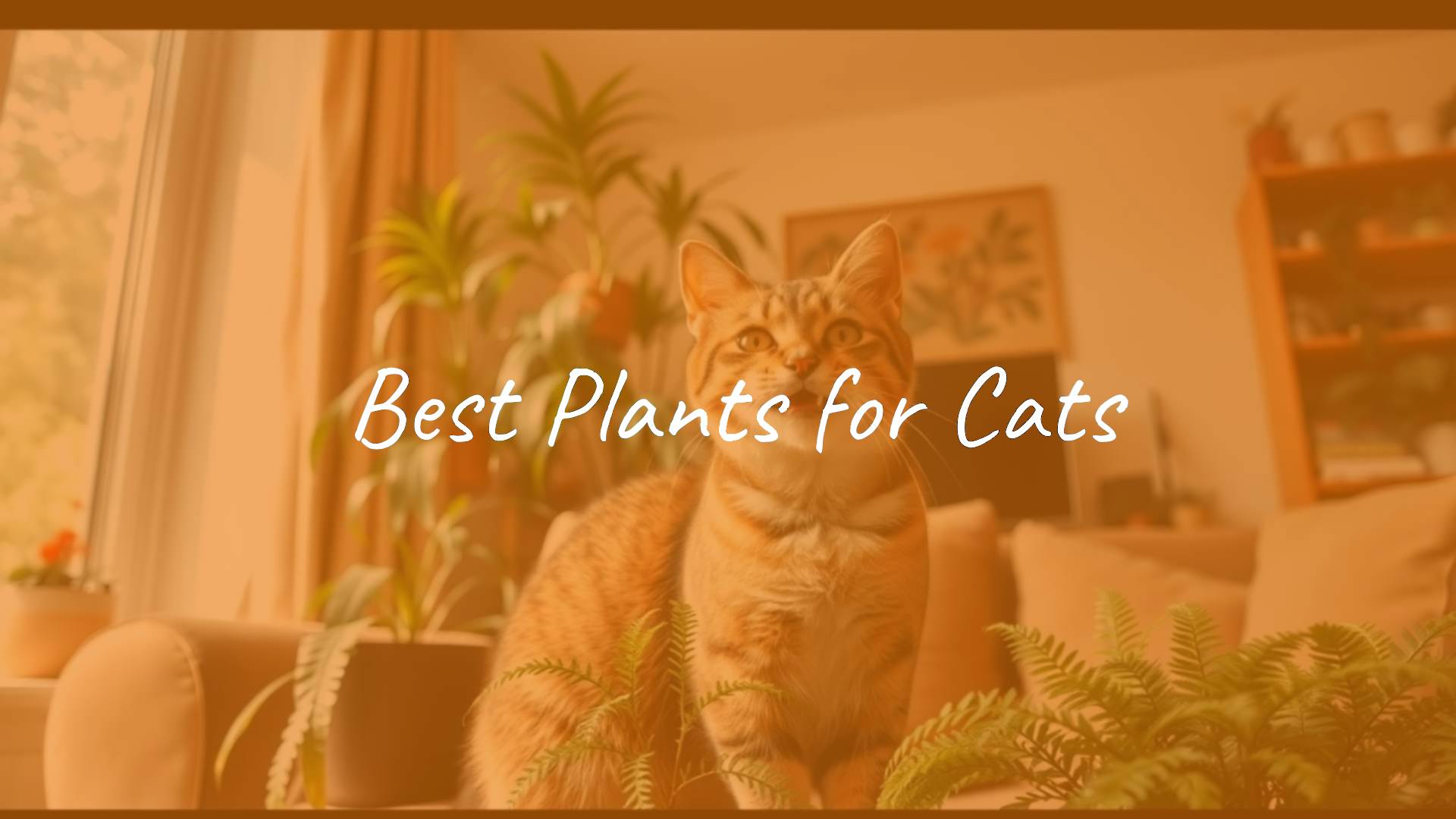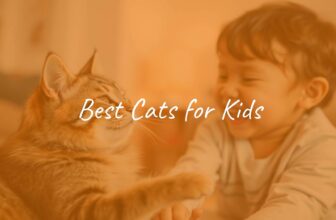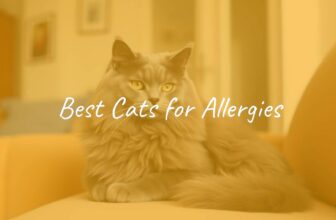
Adding plants to your home can make spaces feel calm and bright, and you can do this safely even with curious cats around. The key is choosing plants that won’t harm them. This guide shows safe plant choices and simple care tips so you can build an indoor garden that looks great and keeps your pets safe.
Some common houseplants can hurt cats if they chew on them. Picking non-toxic plants is a very important step to keep your pet safe and avoid emergency vet visits. Below, you’ll see why these choices matter, what to check before you buy, and many options that look good and are cat-safe.

Why Choose Cat-Safe Plants for Your Home?
Houseplants add color, texture, and a calm feel to any room. For cat owners, safety matters most. Choosing cat-safe plants isn’t just about avoiding a small problem-it’s about protecting your pet and making a home where both plants and animals do well.
Benefits of Cat-Friendly Houseplants
Cat-safe plants give peace of mind and other perks too. Many help clean indoor air by filtering pollutants. Their shapes and colors make rooms feel more inviting and calm. A corner with a flowing spider plant or a graceful parlor palm can look lovely and still be safe for your cat.
Also, plants like cat grass can help your pet directly. They offer a safe way for cats to chew greenery, which may keep them from biting plants that could be harmful. With the right choices, you can enjoy indoor plants without the constant worry.
Risks of Toxic Plants to Cats
Toxic plants can cause real harm. Cats are curious and may chew leaves or flowers. The ASPCA’s Poison Control Center reported over 10,000 dog and cat cases in 2020 linked to eating houseplants. This number shows the real risk from plants that seem harmless.
Reactions range from mild stomach upset to serious issues like seizures, organ damage, or death. Lilies are especially dangerous; even a small amount can poison a cat. Some toxic and non-toxic plants look similar, so careful checking is important. Choose clearly labeled safe plants whenever possible.
How Plants Improve Cat Well-Being
Safe plants can also make life better for indoor cats. Moving fronds or dangling spider plant “babies” give your cat something to watch and bat at, tapping into their natural hunting and exploring instincts.
Cat grass adds fiber that may help digestion and hairball control. Giving your cat safe greens to chew can also steer them away from chewing cords or risky plants. Overall, smart plant choices can make your cat’s indoor space more interesting and more fun.
What Makes a Plant Safe or Unsafe for Cats?
Some plants that are fine for people can be dangerous for cats. The difference often comes down to chemicals in the plant’s leaves, stems, or sap.
Common Toxins and Their Effects on Felines
Cats are sensitive to certain plant compounds like alkaloids and glycosides. These can upset the stomach, affect the heart, or damage organs.
For example, calcium oxalate crystals in Dieffenbachia can cause mouth pain and swelling. Saponins in some plants can cause vomiting or diarrhea. Lilies can cause kidney failure. Cardiac glycosides (like in oleander) can affect the heart. Signs include drooling, vomiting, diarrhea, weakness, tremors, or worse.
How to Identify Toxic vs. Non-Toxic Plants
Telling safe and unsafe plants apart can be hard. The most reliable way is to check the ASPCA plant toxicity list, a large database with many plants and their effects on pets.
When you buy a plant, look up its botanical name and confirm it on a trusted pet-safe list. Common names can be confusing or cover several species with different safety levels. If you’re unsure about a plant at home, play it safe: remove it or place it completely out of reach. Also, keep plants tidy by removing dead leaves and flowers so your cat isn’t tempted to chew them.
Best Indoor Plants for Cats
You can turn your home into a green space without risking your cat’s health. Many indoor plants are safe, pretty, and easy to care for. Enjoy your hobby without worry.
Popular Cat-Safe Indoor Plant Varieties
Plenty of popular houseplants are non-toxic to cats. You can grow trailing vines, bold palms, or patterned foliage without constantly watching your pet. The variety is wide, so you can match any style.
These plants bring interesting shapes, growth habits, and sometimes flowers. Choosing cat-safe plants lets your home and pets live side by side with ease.
Spider Plant (Chlorophytum comosum)
The spider plant (also called ribbon plant or airplane plant) is a favorite safe houseplant. It’s adaptable, forgiving, and good for beginners. It grows well in many homes and can handle a bit of neglect.
Its small dangling “spiderettes” start as tiny white flowers and turn into baby plants. Leaves can be solid green or striped. Great in hanging baskets, spider plants like bright, indirect light and well-drained soil. They grow from rhizomes that store nutrients. They’re tough and work well in busy homes with playful cats.
Boston Fern (Nephrolepis exaltata)
The Boston fern is probably the most popular indoor fern for pet owners. Its soft, feathery fronds add classic green style and a calm feel. It can grow up to three feet tall and about a foot wide, making a strong visual point.
Cats often like to swat at the shaggy fronds, and that’s okay-this fern is non-toxic. It likes bright, indirect light, steady moisture, and higher humidity, so bathrooms or guest rooms can be great spots. Its spores are safe for people and pets.
Parlor Palm (Chamaedorea elegans)
The parlor palm has elegant, arching fronds and gives a light tropical feel. It’s non-toxic to cats and dogs and grows well in low light, so it works in many rooms, even darker ones.
It prefers steady moisture and benefits from the occasional misting. It also helps clean the air. This palm is easy to care for and doesn’t need constant attention.
Areca Palm (Dypsis lutescens)
The areca palm (butterfly palm) brings a bold tropical look with its soft, feathery fronds. It’s safe for pets and thrives in bright, indirect light with higher humidity.
Indoors, it usually reaches about 8 feet. Water it when the top of the soil dries, but don’t keep it soggy. It can be sensitive to fluoride in tap water, so using distilled or rainwater can help keep the leaves healthy. It also helps improve indoor air.

Calathea and Prayer Plants
Calatheas and prayer plants are known for striking leaf patterns and colors. Their leaves move during the day and often fold up at night. They’re safe for cats and dogs.
They like warm, humid rooms and medium to bright indirect light, but many handle lower light. Keep the soil lightly moist and let the top half dry between waterings. A mister or humidifier can help them look their best. They also help clean the air.
African Violet (Saintpaulia ionantha)
African violets are small, non-toxic bloomers with fuzzy leaves and flowers in white, blue, or purple. They add bright color and stay compact, making them easy to place.
They prefer bright, indirect light. Keep them a bit away from sunny south or west windows to avoid leaf burn; east or north windows are perfect. Water from the bottom to keep water off the leaves. They bloom often and are a great safe pick for cat owners.
Peperomia
Peperomias come from tropical areas of the Americas and the Caribbean. With hundreds of kinds, they’re a great pet-safe group for variety and ease. Their thick leaves store water, so they handle missed waterings well.
Leaves can be smooth, rippled, green, red, purple, or variegated. They’re small, slow-growing, and less tempting for cats. Most like bright, indirect light and water every one to two weeks. They’re hardy and safe, perfect for adding texture and color.
Hoya
Hoya, or wax plant, has thick, shiny leaves and long vines that trail or climb. Many types bloom with star-shaped, scented flowers in white, yellow, pink, red, or purple.
Hoyas like bright, indirect light and need a little direct sun to bloom. They prefer well-draining soil and less frequent watering. They’re hardy, long-lived, and pet-safe, making them a good choice for beauty and low effort.
Fittonia (Nerve Plant)
Fittonia (nerve plant) is a small plant with bold leaf veins in white, pink, or red. The patterned leaves stand out in any setup. It comes from humid tropical forests and likes bright, indirect light and steady humidity.
Fittonia can droop when it’s thirsty but usually perks up after a drink. Let the top of the soil dry a bit between waterings, and mist often for humidity. It’s safe for pets and great for bathrooms or terrariums.
Bird’s Nest Fern (Asplenium nidus)
Bird’s nest fern has bright green, wavy fronds that grow from a central rosette, like a nest. It’s non-toxic to cats and dogs and adds a bold, leafy texture.
It grows well in low to bright indirect light and likes humidity. Indoors it reaches about two feet. Despite its delicate look, it’s a hardy plant and a strong, safe choice for pet homes.
Cast Iron Plant (Aspidistra elatior)
The cast iron plant earns its name. It’s tough, handles low light, and doesn’t mind missed waterings. Its dark green leaves look clean and simple and fit many styles. It’s safe for pets.
Great for beginners, it brightens corners that other plants won’t. It’s long-lived, easy, and a safe way to add green with little effort.
Ponytail Palm (Beaucarnea recurvata)
Ponytail palm is an eye-catching evergreen with a swollen base and long, curling leaves. It’s safe for pets and adds a fun, sculptural look.
The thick base stores water, so it’s very drought-tolerant and low-maintenance. It may form more trunks and small white flowers as it ages. It likes full sun to bright light and is a great choice for busy plant owners.
Mosaic Plant (Fittonia albivenis)
Mosaic plant (another Fittonia) has striking veined leaves in white, pink, or red on green, making a mosaic look. It’s safe for cats and dogs.
It does well in low light but loves high humidity, so bathrooms are ideal. Keep the soil slightly moist and mist often. It stays compact and works nicely in small spaces or terrariums.
Chinese Money Plant (Pilea peperomioides)
Chinese money plant has round, coin-like leaves on slim stems. It’s very popular and safe for pets.
It prefers bright, indirect light but can manage with moderate to low light. Water deeply but infrequently, letting the soil dry out fully between waterings. If leaves droop, it needs water. It grows fast and is a solid pick for beginners.
Best Herbs and Grasses for Cats
Some herbs and grasses are great for cats and support their natural urges to sniff and chew. These can boost enrichment and may help with digestion.
Cat Grass (Dactylis glomerata, Wheatgrass)
Cat grass refers to safe grasses like wheat, oat, barley, and Dactylis glomerata. It doesn’t make cats “high.” It’s a healthy snack that many cats enjoy.
It adds fiber for digestion and hairball relief and offers nutrients that may be missing from regular food. It’s easy to grow indoors and can keep cats from chewing other plants.
Catnip (Nepeta cataria)
Catnip is a mint family herb that excites about half of all cats. The leaf oils can spark rolling, rubbing, and playful behavior. It’s non-toxic and safe.
It grows well indoors or out and may bloom white, pink, or purple. To protect the plant and avoid overdoing it, grow it out of reach and offer cut leaves as a treat. Some owners also use catnip to encourage play, exercise, or appetite.
Valerian (Valeriana officinalis)
Valerian can stimulate cats much like catnip does. While people use the root as a calming aid, many cats find it exciting. It has clusters of white flowers that pollinators like.
Some people dislike its smell, so it can be better outdoors or in a well-ventilated area. It’s non-toxic and a good option for cats that don’t react to catnip.
Mint and Lemon Balm
Many mints and lemon balm are safe for cats. Cats often enjoy their scent. Mint grows fast and can spread. Most cats sniff and roll in it more than they eat it, but large amounts of peppermint might upset the stomach.
Lemon balm offers a gentle lift and smells great. Both are easy to grow and give your cat safe scents and textures to explore.
Cat-Safe Plants for Bright and Low Light Conditions
Whether your home gets lots of sun or has shaded rooms, there are safe plants that will do well. Match each plant to the light it likes so it stays healthy and safe.
Pet-Friendly Plants for Sunny Spots
Bright windows and sunny rooms suit many safe plants. South or west windows (with a bit of distance to avoid scorch) and open east windows are good locations.
- Haworthia (Zebra Plant): Small succulents that like bright light, even some direct sun. The rosettes with white stripes add texture. They also handle medium indirect light better than many succulents.
- Echeveria: Rosette succulents that look like flowers. They come in many colors and need about 4-6 hours of sun daily.
- Ponytail Palm: Prefers bright light. Its shape makes a bold display in a sunny spot.
- Hoya: Likes bright, indirect light; a bit of direct sun helps blooms.
- African Violet: Thrives in bright, indirect light; east or north windows work well.
These sun-loving, pet-safe plants let you use your home’s light while keeping your cat safe.
Best Options for Low-Light Rooms
Low light doesn’t mean you can’t grow plants. Many safe options handle dimmer rooms and don’t need much care.
- Parlor Palm (Chamaedorea elegans): Great in low light and adds a light tropical touch.
- Cast Iron Plant (Aspidistra elatior): Very tough, handles low light and irregular watering.
- Calathea and Prayer Plants: Prefer medium indirect light but can handle lower light with good humidity.
- Bird’s Nest Fern: Does well in low to medium indirect light and adds a bold texture.
- Fittonia (Nerve Plant): Thrives in low light with high humidity-great for bathrooms.
- Chinese Money Plant (Pilea peperomioides): Prefers bright indirect light but adapts to lower light.
- Peperomia: Many types tolerate lower light and don’t mind drying out between waterings.
With these low-light, cat-safe choices, even the darker corners of your home can be green and pet-safe.
Care Tips for Cat-Safe Houseplants
Bringing home safe plants is the start. To keep them healthy and safe for your pets, give them the right light, water, and setup, and take steps to prevent digging or nibbling.
Watering and Lighting Recommendations
Most houseplants, including pet-safe ones, like bright, indirect light. Place them near a north window or a few feet from other windows so the sun doesn’t scorch leaves. If natural light is low, a grow light for 12-16 hours a day can help.
Overwatering is the most common mistake. Succulents like Haworthia and Echeveria prefer to dry out fully between drinks. Spider plants and ferns like steady moisture, but not soggy soil. Always check the soil before watering. Empty water from saucers so roots don’t rot and to keep the area clean for pets.
Preventing Soil and Leaf Disturbance
Cats may dig or bat at plants. To stop digging, add a layer of pebbles or stones on top of the soil. This can also help hold some moisture. Hang trailing plants or place them where cats can’t pull them down.
Trim off dead leaves and flowers often. This keeps plants neat and reduces the chance your cat will chew dry or decaying bits. If your cat keeps nibbling safe plants, offer cat grass as a better target.
Pet-Safe Fertilizers and Soil Choices
For feeding your cat-safe plants, be careful. Many fertilizers and pesticides can harm pets if eaten. Skip harsh chemicals. Use pet-friendly choices like compost or worm castings.
Choose potting mixes without toxic additives. Pick a well-draining mix that fits your plant. Safe plants plus safe soil and feeds make a home that’s good for plants and pets alike.
Creative Ways to Display Cat-Friendly Plants
You can show off plants in ways that look good and keep cats safe. Place plants so you can enjoy them, but your cat can’t easily reach them.
Placing Plants Out of Reach
Keep plants off the floor if your cat chews or digs. Add wall shelves near windows for small plants like African violets or peperomias. This gives a pretty, layered look while keeping plants higher up.
Use hanging baskets for trailing plants like spider plants or hoyas. Plant stands can help, but remember many cats jump high. For tiny plants, try closed terrariums to protect them completely. Think about how agile your cat is and choose spots that really put plants out of reach.

Cat Gardens and Play Areas with Plants
Another approach is to give your cat safe plants they can enjoy. Set up a small “cat garden” with cat grass and other safe options in a spot they can reach.
Try a corner with a sturdy parlor palm (with a stable pot), some small peperomias, and a tray of cat grass. Mixing sizes and textures keeps cats busy and less interested in your other plants, even the safe ones.
Where to Buy Non-Toxic Plants for Cats
Source matters. Buy from places that label plants clearly and avoid harmful treatments. A little research helps protect your pet.
Recommended Retailers and Online Stores
Local garden centers often have houseplant sections and staff who can point you to pet-safe options. Call ahead to ask about their current stock of safe plants.
Online shops like Planet Desert focus on easy, non-toxic plants and often list safety info and botanical names you can verify with the ASPCA. When ordering online, look for clear “pet-safe” labeling and scientific names.
Certification and Labeling for Pet-Safe Plants
There isn’t a universal “pet-safe” certification, but good sellers label plants as safe for cats and dogs on tags or product pages. Always double-check the botanical name on the ASPCA list.
Some nurseries group pet-friendly plants together, which makes shopping easier. Ask staff to confirm any plant before you buy. Being informed helps you avoid bringing home risky plants.
Frequently Asked Questions About Plants for Cats
Even with careful choices, you may still have questions about plants and cat behavior. Here are common questions and clear answers to help you manage both plants and pets.
Should I Worry About My Cat Chewing Safe Plants?
The plants listed here are non-toxic, so they won’t cause severe poisoning. Still, don’t let your cat chew a lot of any plant. Eating large amounts of even safe leaves can upset the stomach and cause vomiting or diarrhea.
A small nibble is usually fine, and cat grass can help digestion. If your cat chews a lot, it may be boredom or a need for fiber. Offer cat grass, play more, and add other forms of enrichment.
Do All Cat-Friendly Plants Need High Maintenance?
No. Many of the best safe plants are very easy to care for. Spider plants, peperomias, and cast iron plants handle a wide range of conditions and even some neglect.
Succulents like Haworthia and Echeveria are very drought-tolerant and can go weeks without water. While some plants (like calatheas) like higher humidity, they’re still manageable. Pick plants that fit your home’s light and your routine.
Can Cats Develop Allergies to Indoor Plants?
It can happen, though it’s less common than toxicity. Some cats may react to pollen, sap, or other plant parts. Watch for itchy skin, sneezing, coughing, wheezing, vomiting, or diarrhea after adding a new plant.
If you notice symptoms, talk to your vet. They may suggest removing that plant. Keep an eye on your cat whenever you bring in something new.





